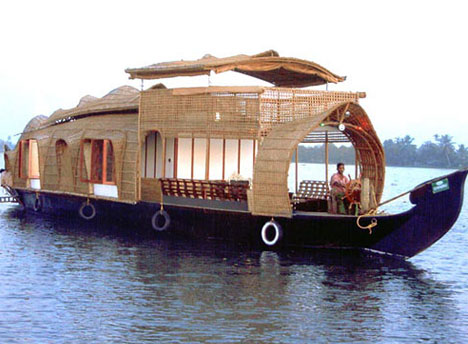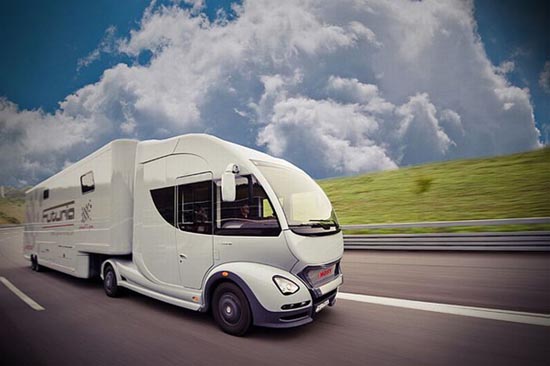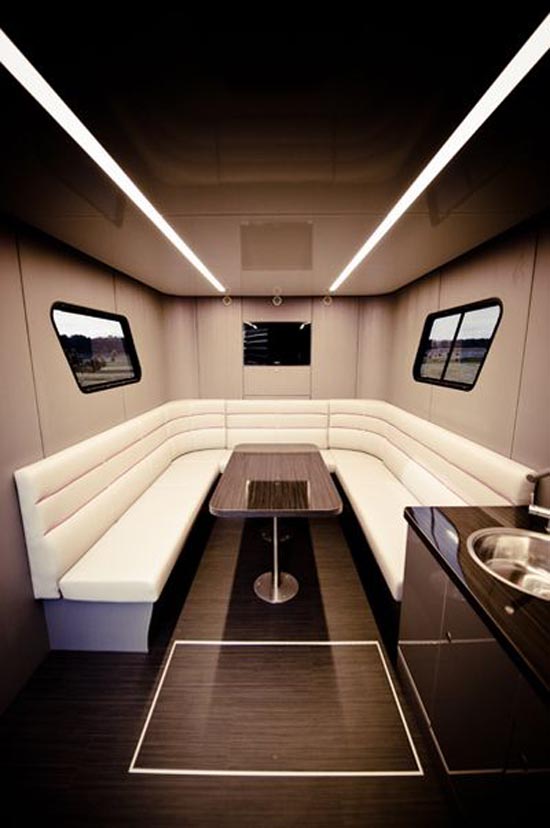 The East Beach Cafe in Littlehampton, England certainly stands out among the more traditional buildings of the area. Winner of a number of architectural prizes including the Royal Institute of British Architects regional prize, the cafe has an unusual design made up of stacked organic shapes in rust-colored steel. Architect Thomas Heatherwick wanted the structure to fit the “raw beauty” of its surroundings without being too literal with ocean-inspired themes. The cafe has reportedly had a “Guggenheim effect” on the town (referencing, of course, the Guggenheim Museum in Bilbao, Spain) drawing in tourists and gaining worldwide attention.
The East Beach Cafe in Littlehampton, England certainly stands out among the more traditional buildings of the area. Winner of a number of architectural prizes including the Royal Institute of British Architects regional prize, the cafe has an unusual design made up of stacked organic shapes in rust-colored steel. Architect Thomas Heatherwick wanted the structure to fit the “raw beauty” of its surroundings without being too literal with ocean-inspired themes. The cafe has reportedly had a “Guggenheim effect” on the town (referencing, of course, the Guggenheim Museum in Bilbao, Spain) drawing in tourists and gaining worldwide attention.
source:http://weburbanist.com/2011/07/08/crafty-to-crazy-13-contemporary-cafes-coffee-shops/
 3D printing has quietly begun to take over just about every industry. From printing art and building materials to even creating artificial body parts, rapid prototyping is now being used for a huge variety of items. But now the world’s first 3D printed car is making waves. The Urbee is a hybrid gasoline/ethanol car that can get an amazing 200 MPG highway and 100 MPG in-city. But most impressive of all is the fact that all of the car’s exterior components were created using 3D printing techniques.
3D printing has quietly begun to take over just about every industry. From printing art and building materials to even creating artificial body parts, rapid prototyping is now being used for a huge variety of items. But now the world’s first 3D printed car is making waves. The Urbee is a hybrid gasoline/ethanol car that can get an amazing 200 MPG highway and 100 MPG in-city. But most impressive of all is the fact that all of the car’s exterior components were created using 3D printing techniques.
source:http://gajitz.com/cars-made-to-order-worlds-first-3d-printed-auto-body/
 The car, dubbed the 'Ghost Car', the Pontiac Deluxe Six, because this car throughout its body is covered by a glass material.
The car, dubbed the 'Ghost Car', the Pontiac Deluxe Six, because this car throughout its body is covered by a glass material.
Created in 1939 by General Motors and chemical company Rohm and Haas a cost of $ 25,000 and became the first transparent car, which made in America.
source:ronalrahman.blogspot.com/2011/07/ghost-car-unique-cars-are-invisible.html
 Russia’s fastest high-speed train runs on the Moscow-St. Petersburg line, and made its debut in December 2009. The German-built Velaro RUS trains, also known as the Sapsan, have cut the travel time for the 401-mile route from eight hours to three hours and 45 minutes. The 10-car passenger trains operate at a maximum speed of 155 mph, but hit a speed record of 175 mph during trials in 2009. The eight high-speed trains are worth nearly $1 billion. Russia is eager to expand its high-speed rail network ahead of hosting the 2018 FIFA World Cup. The country has invited foreign investors to bid on development contracts for new lines that will link its cities.
Russia’s fastest high-speed train runs on the Moscow-St. Petersburg line, and made its debut in December 2009. The German-built Velaro RUS trains, also known as the Sapsan, have cut the travel time for the 401-mile route from eight hours to three hours and 45 minutes. The 10-car passenger trains operate at a maximum speed of 155 mph, but hit a speed record of 175 mph during trials in 2009. The eight high-speed trains are worth nearly $1 billion. Russia is eager to expand its high-speed rail network ahead of hosting the 2018 FIFA World Cup. The country has invited foreign investors to bid on development contracts for new lines that will link its cities.
SOURCE:http://2leep.com/bar.php?url=http://2leep.com/news/219530/0/more/
 Taiwan’s high-speed rail project, which cost a total of $18 billion, is one the world’s largest privately funded rail construction plans. The country’s THSR 700T trains have cut travel time from 4.5 hours to 90 minutes on the 214-mile route from the northern capital of Taipei to the southern city of Kaohsiung. The 30 high-speed trains, which began operations in 2007, are based on the Japanese 700 Series Shinkansen “bullet train” model. A record 36.9 million passengers rode the trains in 2010, a 14 percent increase from the year before. The country’s high-speed rail system has been making headlines recently after the government said the network might not last more than 10 years because of sinking land caused by the overuse of groundwater. Last month, the government said it would cap deep groundwater wells that threaten the structural base of the high-speed system.
Taiwan’s high-speed rail project, which cost a total of $18 billion, is one the world’s largest privately funded rail construction plans. The country’s THSR 700T trains have cut travel time from 4.5 hours to 90 minutes on the 214-mile route from the northern capital of Taipei to the southern city of Kaohsiung. The 30 high-speed trains, which began operations in 2007, are based on the Japanese 700 Series Shinkansen “bullet train” model. A record 36.9 million passengers rode the trains in 2010, a 14 percent increase from the year before. The country’s high-speed rail system has been making headlines recently after the government said the network might not last more than 10 years because of sinking land caused by the overuse of groundwater. Last month, the government said it would cap deep groundwater wells that threaten the structural base of the high-speed system.
SOURCE:http://2leep.com/bar.php?url=http://2leep.com/news/219530/0/more/














